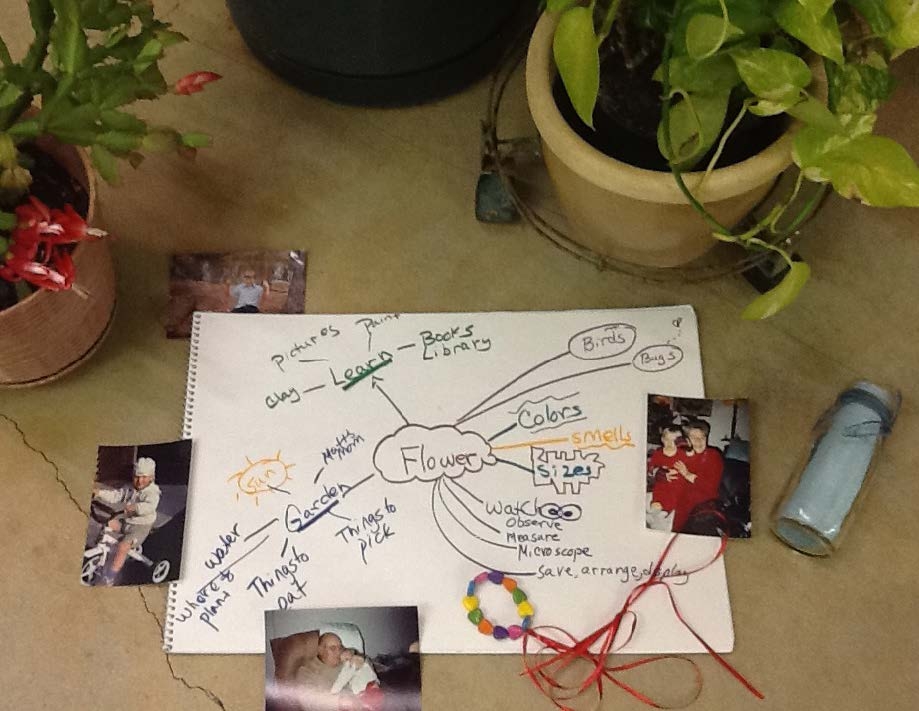Best Practices in Intergenerational Programming: Practice 11
ID
FCS-44P (FCS-164P)
EXPERT REVIEWED

Document and communicate experiences to build on in future activities.
Practice 11 • Documenting and communicating.
Facilitators document and communicate experiences to build on in future activities.
Documentation starts with careful observation, then evolves into a display of learning processes. Documentation has grown in popularity as a way to review children’s work at various stages of completion. Photographs, work samples, transcripts of conversations, and comments accompany the display. This documentation is then shared with parents as well as discussed among teachers.
Teachers who collaboratively reflect on the work can begin to see additional learning pathways and build their curriculum based on children’s cues.
When applied to an older adult audience, documentation usually takes the form of powers of attorney, medical directives, and insurance policies. However, that is not what this best practice is about.
When the concept of documentation is applied to intergenerational programs, artifacts and evidence are collected to demonstrate the relationship-building process of old and young together. Facilitators may post a photograph sequence, create a bulletin board story, or share a notebook about projects with families and community members.
Documentation is not performed independently. Many perspectives are involved to analyze and interpret the success and progress of your program.
Application of the Practice
Documentation makes learning visible (“Making Learning Visible” 2012).
- What evidence will you collect to show that young and old are building relationships?
- How will you and your colleagues discuss the documentation and use it for future planning?

Program Ideas
The way observations are documented varies. Consider using sticky notes, a clipboard and chart of items to observe, a blank calendar, or small labels (like mailing labels) in addition to photographs, videos, sketches, and tallies.
Examples of documentation include recording conversations or storytelling between children and elders, displaying co-created artwork, and photographing the progress of planning and creating a garden together.
Don’t be overwhelmed. Start with a learning moment and write about it to share with others. Later, emphasize the process of learning and interacting rather than the product. Observe over time as a relationship blooms and matures.
Guiding questions to consider when reviewing what you have documented are:
- What else can I do to provoke their engagement?
- What else will capture their interests?
- What additional resources do I need?
Families like to learn about what their child or older relative did during intergenerational programming. Sharing information can lead to strengthened resources and greater support for the intergenerational program. Daily updates or periodic newsletters can share the latest information and build support for your program.
Best Practices for Intergenerational Programming
- Staff members of the adult and child programs collaborate to plan activities.
- Participants are involved in decision-making about the activity and during activities.
- Participation is voluntary.
- Participants are prepared ahead of time and reflect on the activity afterward.
- Activities reflect interests, backgrounds, and social histories of program participants.
- Activities are age- and role-appropriate.
- Activities support interaction among intergenerational participants.
- Facilitators skillfully stage the environment to promote interaction.
- Facilitators consider the social environment and the role of staff members.
- Adaptive equipment is used as appropriate.
- Facilitators document and communicate experiences to build on in future activities.
Additional Resource
“Observing Young Children.” 2011. Eastern Connecticut State University. Center for Early Childhood Education. Educational Video Clips for Early Childhood Professionals: e-clips No. 5. www.easternct.edu/cece/e-clips_observation.html. Seitz, H. 2008. “The Power of Documentation in the Early Childhood Classroom.” Young Children 63 (March): 88-93.
Reference
Jarrott, S. E. 2011. “Where Have We Been and Where Are We Going? Content Analysis of Evaluation Research of Intergenerational Programs.” Journal of Intergenerational Relationships 9:37-52. doi:10.1080/15350770.2011.544594.
“Making Learning Visible.” 2012. Understanding, Documenting, and Supporting Individual and Group Learning. Website. www.makinglearningvisibleresources.org/. www.pz.harvard.edu/
Project TRIP
A Children’s, Youth, and Families at Risk project of Virginia Tech.
Shannon Jarrott, Professor, Social Work, The Ohio State University
Karen DeBord, (retired) Extension Specialist, Virginia Tech
Contact: Crystal Tyler-Mackey, Extension Specialist and Leader, Community Viability, Virginia Tech, cmtyler@vt.edu.
Intergenerational programs are those that connect younger and older generations to foster positive experiences. Research continues to grow, noting that when successfully delivered, intergenerational programs result in positive health effects, child learning, and appropriate socialization for both young and old (Jarrott 2011). For more information on IG practice, visit https://u.osu.edu/bridge2health/.
The 11th practice relates to documenting and communicating experiences.
Virginia Cooperative Extension materials are available for public use, reprint, or citation without further permission, provided the use includes credit to the author and to Virginia Cooperative Extension, Virginia Tech, and Virginia State University.
Virginia Cooperative Extension is a partnership of Virginia Tech, Virginia State University, the U.S. Department of Agriculture (USDA), and local governments, and is an equal opportunity employer. For the full non-discrimination statement, please visit ext.vt.edu/accessibility.
Publication Date
October 24, 2025



